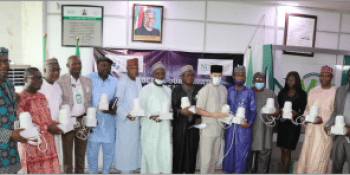Integrating climate science with disaster risk management can reduce costs and protect lives

The International Research Institute for Climate and Society, together with the American Red Cross, and in partnership with the CGIAR Research Program on Climate Change, Agriculture and Food Security (CCAFS) and others, have launched its third edition ‘A Better Climate for Disaster Risk Management’ within the series Climate and Society publications. The report brings forward the importance of including seasonal climate forecasts into disaster risk management to better prevent and plan for disasters. Being prepared can reduce costs and protect lives, the report states, as well as reduce the impacts of disasters and improve livelihoods.
The report also highlights the progress that has been made within the area of connecting science based information on climate and weather to disaster risk management, while bringing forward examples and lessons learned from the field. A few of the examples included are integrating rainfall and hurricane forecasts into planning in post-earthquake Haiti and using climate information to increase long-term food security in Kenya.
Read more on the launching event here.
Creating partnerships
Today there is generally a lack of collaboration among climate information providers and humanitarian actors, which reduces the ability to act effectively, the reports states. Instead a partnership can help develop trust, create actionable information as well as provide a vital opportunity for feedback on the information available. Humanitarian actors can in this sense help scientists identify new information needs and define new questions for further research, all to improve future disaster risk management and help protect lives. This mutually beneficial and reinforcing relationship is also what the report wants to highlight.
How to move forward
The report offers several recommendations for future work:
- Initial efforts should focus on potential ‘quick wins’ - areas where seasonal forecasts are more reliable, meaning immediate returns on investment.
- Disaster risk managers should enhance their understanding for how climate forecasts work, including its limitations.
- Donor agencies should increase its support and funding for disaster preparedness and prevention.
- Build in impact and evaluation studies into future project designs and implementation
- The relative contribution of seasonal, decadal, and long-term trends in climate should be presented more clearly to better inform strategic decisions.
- Information should be integrated into decision-making platforms, thus making it easier to use.
- Partnerships between climate scientists and disaster risk managers should be encouraged and enhanced.
The report was published by IRI in partnership with the CGIAR Research Program on Climate Change, Agriculture and Food Security (CCAFS), the International Federation of Red Cross and Red Crescent Societies (IFRC), the United Nations’ Office for the Coordination of Humanitarian Affairs (OCHA), the World Food Programme (WFP) and the US National Oceanic and Atmospheric Administration (NOAA).
More information
Download the full report: A Better Climate for Disaster Risk Management (PDF - 5 mb)
Download the Policy Brief: A Better Climate for Disaster Risk Management (PDF - 1.5 mb)
Click to learn more about CCAFS work on managing climate risk


